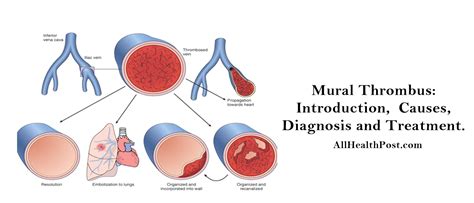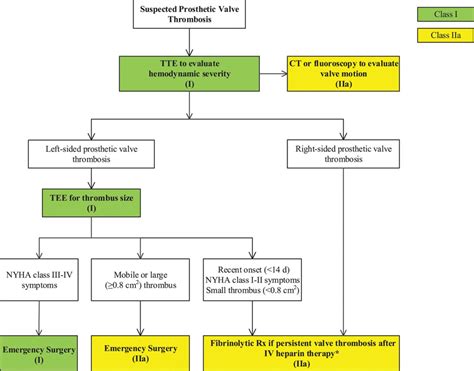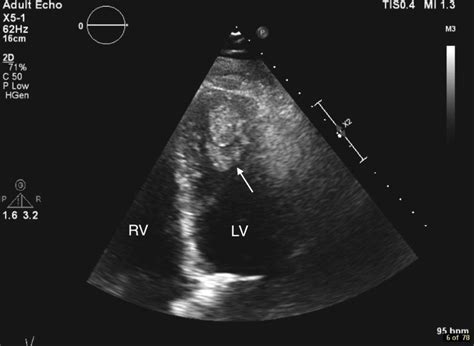lv left ventricular mural thrombus without mi | Lv mural thrombus treatment guidelines lv left ventricular mural thrombus without mi ¢= @bp ‹ d©Y©_!@»ƒ¬ø˜lêf¶×Gb3æ unyKÒÙr® ƒ ¾îãI¾˜^ . X Country Show at Harrah’s Las Vegas is a thrilling and seductive event that combines high-energy dance routines and incredible music performances. This one-of-a-kind show offers a unique, adult-oriented entertainment experience that features stunning choreography, sultry performances, and sexy costumes that are sure to leave audiences .
0 · reperfusion therapy for mural thrombus
1 · mural thrombus treatment guidelines
2 · left ventricular thrombus treatment guidelines
3 · left ventricular mural thrombus treatment
4 · guidelines for Lv thrombus anticoagulation
5 · chest guidelines Lv thrombus
6 · Lv thrombus treatment guidelines nhs
7 · Lv mural thrombus treatment guidelines
View and Download Larson Electronics EPL-24-2L-LED-VISRED instruction manual online. Explosion Proof Paint Spray Booth LED Lighting Visible/Red Combination - 2ft 2-Lamp - C1D1. EPL-24-2L-LED-VISRED lighting equipment pdf manual download.
The risk of LV thrombus formation after MI may be greatest in the first 2 weeks, and several studies have found increased incidence of LV thrombus detection by transthoracic echocardiography (or CMR) when performed 1 to 2 weeks after MI (compared with when .¢= @bp ‹ d©Y©_!@»ƒ¬ø˜lêf¶×Gb3æ unyKÒÙr® ƒ ¾îãI¾˜^ .We would like to show you a description here but the site won’t allow us.PK u!3Yoa«, mimetypeapplication/epub+zipPK u!3Y .
Left ventricular (LV) thrombus formation is a well‐known complication in the course of .Obliterating Left Ventricular Mural Thrombosis. JACOB ZATUCHNI and .We sought to determine whether an association existed between the . Left ventricular (LV) thrombus may develop after acute myocardial infarction (MI) and occurs most often with a large, anterior ST-elevation MI (STEMI). However, the use of .
Left ventricular (LV) thrombus development following acute myocardial infarction is driven by the elements of Virchow’s triad: endothelial injury, blood stasis, and hypercoagulability. Each of .The advent of reperfusion therapy and the widespread use of primary percutaneous coronary intervention (PCI) have markedly reduced the incidence of post–myocardial infarction (MI) left . The natural history of mural (laminated) LV thrombus and whether the duration of anticoagulation should be tailored to the morphology of the LV thrombus; The benefits of OAC .
Acute anterior STEMI without cardiac thrombosis (n = 157 242) Acute anterior STEMI . Medicherla CB, et al. Echocardiographic algorithm for post‐myocardial infarction LV thrombus: .Left ventricular thrombus is a blood clot (thrombus) in the left ventricle of the heart. LVT is a common complication of acute myocardial infarction (AMI). [1][2] Typically the clot is a mural . Is anticoagulation really indicated for laminated thrombus (not a more mobile, round, mural thrombus)? Is DOAC a reasonable alternative to warfarin for the prevention and .
In patients who have high-risk features for embolisation (e.g. mobile or protruding thrombus), continuation of OAC should be considered, taking into account the bleeding risk. In . Clinical practice guidelines from the American Heart Association recommend consideration of prophylactic anticoagulation to prevent left ventricular thrombus (LVT) formation in patients with anterior ST-elevation . The risk of LV thrombus formation after MI may be greatest in the first 2 weeks, and several studies have found increased incidence of LV thrombus detection by transthoracic echocardiography (or CMR) when performed 1 to 2 weeks after MI (compared with when performed in the first several days after MI). 16,53–58 Therefore, in patients after MI . Left ventricular (LV) thrombus may develop after acute myocardial infarction (MI) and occurs most often with a large, anterior ST-elevation MI (STEMI). However, the use of reperfusion therapies, including percutaneous coronary intervention and fibrinolysis, has significantly reduced the risk.

reperfusion therapy for mural thrombus
Left ventricular (LV) thrombus development following acute myocardial infarction is driven by the elements of Virchow’s triad: endothelial injury, blood stasis, and hypercoagulability. Each of these components further serves as a therapeutic target in the treatment and prevention of left ventricular thrombus following acute myocardial infarction.The advent of reperfusion therapy and the widespread use of primary percutaneous coronary intervention (PCI) have markedly reduced the incidence of post–myocardial infarction (MI) left ventricular thrombus (LVT) over the last decades (1–3). The natural history of mural (laminated) LV thrombus and whether the duration of anticoagulation should be tailored to the morphology of the LV thrombus; The benefits of OAC in addition to antiplatelet therapy in patients with STEMI who have undergone primary PCI;Acute anterior STEMI without cardiac thrombosis (n = 157 242) Acute anterior STEMI . Medicherla CB, et al. Echocardiographic algorithm for post‐myocardial infarction LV thrombus: a gatekeeper for thrombus evaluation by delayed enhancement CMR. . Weinreich DJ, Burke JF, Pauletto FJ. Left ventricular mural thrombi complicating acute .
Left ventricular thrombus is a blood clot (thrombus) in the left ventricle of the heart. LVT is a common complication of acute myocardial infarction (AMI). [1][2] Typically the clot is a mural thrombus, meaning it is on the wall of the ventricle. [3] The primary risk of LVT is the occurrence of cardiac embolism, [1][4] in which the thrombus .
Is anticoagulation really indicated for laminated thrombus (not a more mobile, round, mural thrombus)? Is DOAC a reasonable alternative to warfarin for the prevention and treat-ment of LV thrombus? What management options are there in patients with persistent LV throm-bus despite therapy?
In patients who have high-risk features for embolisation (e.g. mobile or protruding thrombus), continuation of OAC should be considered, taking into account the bleeding risk. In patients with a mural, organised or calcified thrombus without high-risk features, withdrawal of OAC may be considered. Clinical practice guidelines from the American Heart Association recommend consideration of prophylactic anticoagulation to prevent left ventricular thrombus (LVT) formation in patients with anterior ST-elevation myocardial infarction.
The risk of LV thrombus formation after MI may be greatest in the first 2 weeks, and several studies have found increased incidence of LV thrombus detection by transthoracic echocardiography (or CMR) when performed 1 to 2 weeks after MI (compared with when performed in the first several days after MI). 16,53–58 Therefore, in patients after MI . Left ventricular (LV) thrombus may develop after acute myocardial infarction (MI) and occurs most often with a large, anterior ST-elevation MI (STEMI). However, the use of reperfusion therapies, including percutaneous coronary intervention and fibrinolysis, has significantly reduced the risk.

Left ventricular (LV) thrombus development following acute myocardial infarction is driven by the elements of Virchow’s triad: endothelial injury, blood stasis, and hypercoagulability. Each of these components further serves as a therapeutic target in the treatment and prevention of left ventricular thrombus following acute myocardial infarction.
The advent of reperfusion therapy and the widespread use of primary percutaneous coronary intervention (PCI) have markedly reduced the incidence of post–myocardial infarction (MI) left ventricular thrombus (LVT) over the last decades (1–3).
The natural history of mural (laminated) LV thrombus and whether the duration of anticoagulation should be tailored to the morphology of the LV thrombus; The benefits of OAC in addition to antiplatelet therapy in patients with STEMI who have undergone primary PCI;Acute anterior STEMI without cardiac thrombosis (n = 157 242) Acute anterior STEMI . Medicherla CB, et al. Echocardiographic algorithm for post‐myocardial infarction LV thrombus: a gatekeeper for thrombus evaluation by delayed enhancement CMR. . Weinreich DJ, Burke JF, Pauletto FJ. Left ventricular mural thrombi complicating acute .Left ventricular thrombus is a blood clot (thrombus) in the left ventricle of the heart. LVT is a common complication of acute myocardial infarction (AMI). [1][2] Typically the clot is a mural thrombus, meaning it is on the wall of the ventricle. [3] The primary risk of LVT is the occurrence of cardiac embolism, [1][4] in which the thrombus .
Is anticoagulation really indicated for laminated thrombus (not a more mobile, round, mural thrombus)? Is DOAC a reasonable alternative to warfarin for the prevention and treat-ment of LV thrombus? What management options are there in patients with persistent LV throm-bus despite therapy? In patients who have high-risk features for embolisation (e.g. mobile or protruding thrombus), continuation of OAC should be considered, taking into account the bleeding risk. In patients with a mural, organised or calcified thrombus without high-risk features, withdrawal of OAC may be considered.

nike damen sporttasche legend club

mural thrombus treatment guidelines
Encore Hotel - Rooms. Encore Hotel - Tower Suites. Encore Tower Suite King. Retreat to the tranquil Encore Tower Suite King, with separate living room, work area and Italian marble bath. View Details. Book Now.
lv left ventricular mural thrombus without mi|Lv mural thrombus treatment guidelines

























